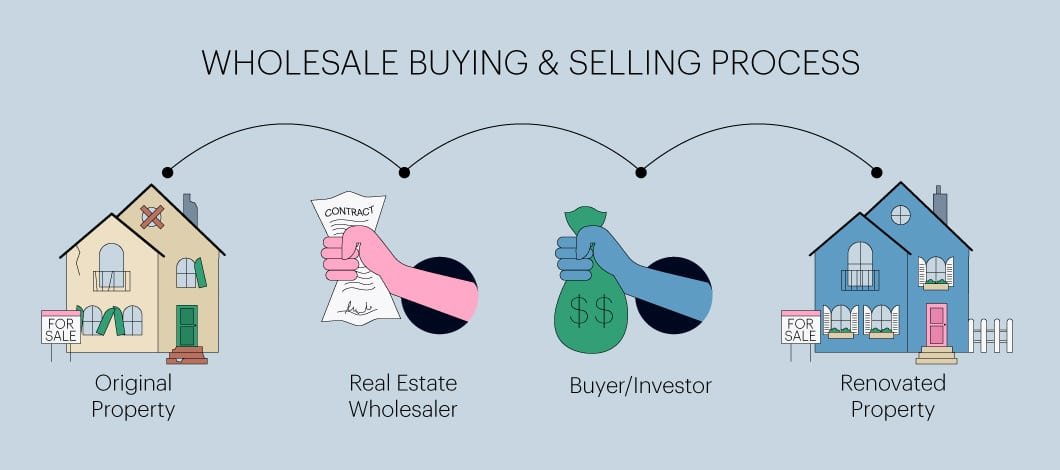Step 1: Understand What Real Estate Wholesaling Is
Real estate wholesaling is the process of:
- Finding deeply discounted properties (often distressed or off-market)
- Negotiating a purchase contract with the seller
- Assigning that contract to an end buyer (typically an investor)
- Earning a wholesaling fee (usually $5,000–$15,000 per deal)
You never take ownership of the property — just control it via contract.

Step 2: Know the Legal Rules in California
While wholesaling is legal in California, there are important guidelines:
- You must not misrepresent your role in the transaction.
- If you’re acting as a middleman, you must clearly disclose that you’re not the buyer .
- You cannot collect a fee unless you have a valid real estate license , unless you use a double-close or assignment method properly.
- Always work with a real estate attorney to ensure compliance.

Step 3: Build Your Knowledge Base
Before jumping in, learn the fundamentals:
- Take real estate investing courses (e.g., BiggerPockets, Udemy)
- Read books like The ABCs of Real Estate Investing by Ken McElroy
- Join local real estate investment groups (REIA)
- Network with experienced wholesalers and investors
Step 4: Find Motivated Sellers
Wholesalers make money by helping motivated sellers who need to sell fast. Common sources include:
- Direct mail campaigns
- Driving for dollars (looking for distressed homes)
- Online leads (Zillow, Facebook Marketplace)
- Expired listings
- Auctions and foreclosure lists
Tip: Use skip tracing services to contact off-market sellers directly.
Step 5: Analyze Deals Like a Pro
Use the 70% Rule to estimate maximum allowable offer (MAO):
Maximum Allowable Offer = (After Repair Value × 70%) – Repair Costs
Example:
- ARV (After Repair Value): $500,000
- Repairs: $50,000
- MAO = ($500,000 × 0.70) – $50,000 = $300,000
This ensures enough room for your fee and the buyer’s profit.

Step 6: Secure the Property Under Contract
Once you find a motivated seller:
- Make a lowball offer with subject-to or assignment clause
- Include contingencies to protect yourself
- Have a real estate attorney review your contract
Step 7: Find a Cash Buyer
Your success depends on having a buyer’s list ready before you secure a deal. Ways to build one:
- Post on real estate investor forums
- Attend REIA meetings
- Use social media (Facebook groups, LinkedIn)
- Partner with flippers or rental investors
Step 8: Choose Your Exit Strategy
There are two main ways to close a wholesale deal:
- Assignment of Contract : Transfer your right to buy the property to the end buyer for a fee.
- Double Close : Two simultaneous closings — one from seller to you, then from you to the buyer. This keeps your profit private.
FAQs
Q: Do I need a real estate license to wholesale in California?
A: Technically no, but you must avoid acting as a licensed agent. Using proper legal structures like assignments or double closes is critical.
Q: Can you wholesale real estate with no money?
A: Yes! You only need earnest money (often $500–$1,000) to secure a property under contract.
Q: Is wholesaling profitable in California?
A: Yes, especially in high-demand markets where investors are willing to pay top dollar for off-market deals.
Q: How much do real estate wholesalers make in California?
A: Fees typically range from $5,000 to $20,000 per deal , depending on location and property value.
Q: What contracts do I need for wholesaling?
A: Assignment agreement, purchase agreement with contingency clauses, and disclosure forms.

Join The Discussion